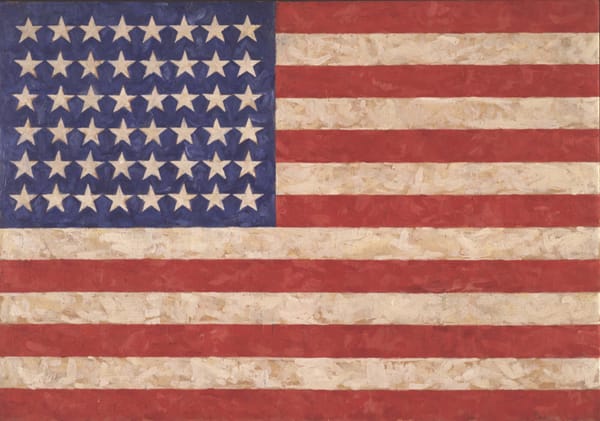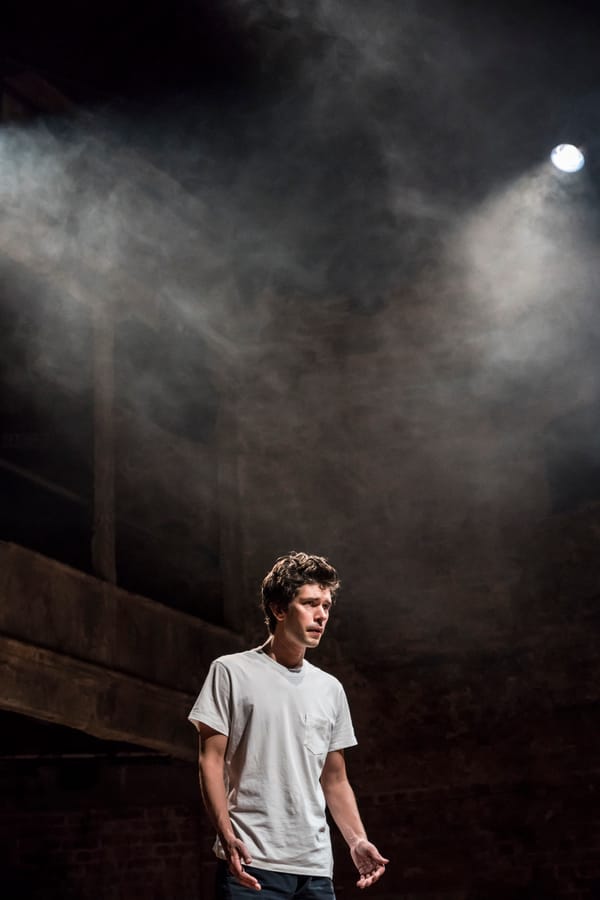Colour and Light: Degas' mastery of pastels
Burrell's Degas works shine like jewels in the National Gallery's exhibition
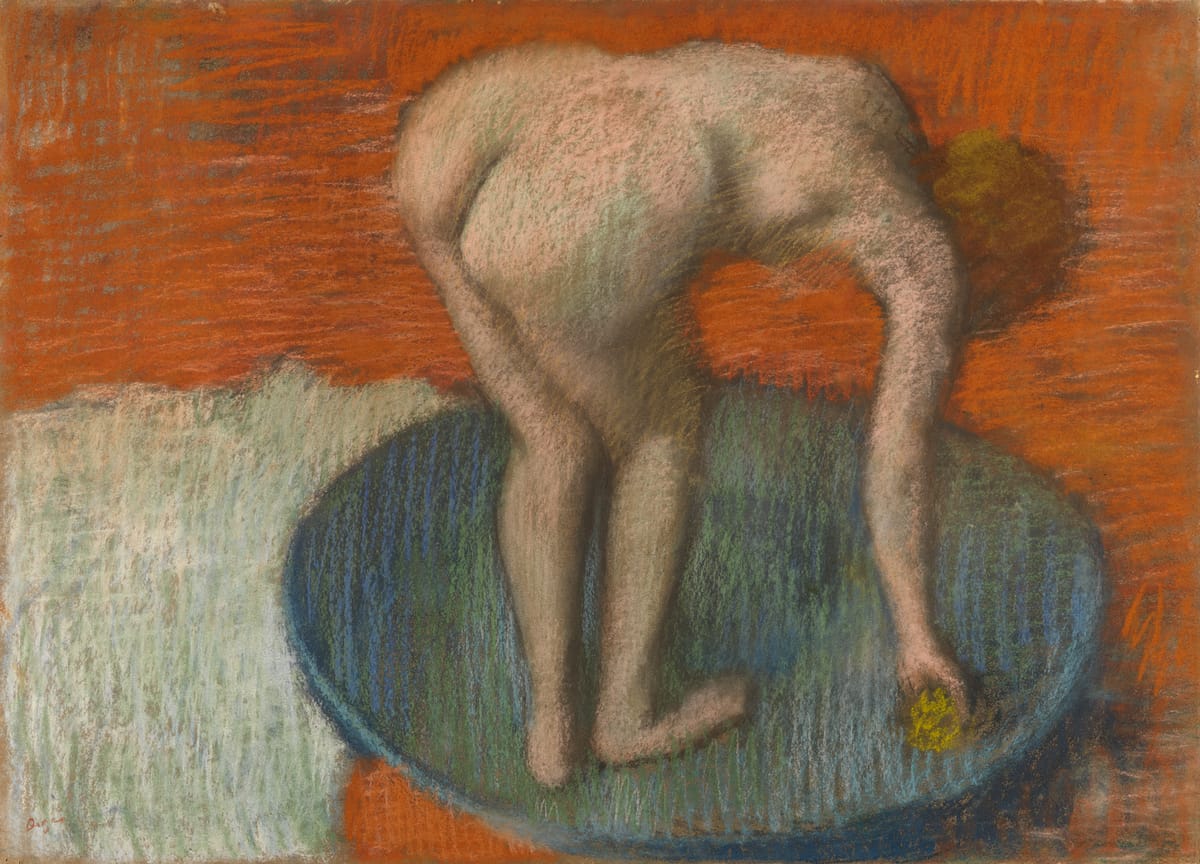
Glasgow’s Burrell Collection, which was amassed by shipping magnate William Burrell, is closed until 2020 for refurbishment; a loss, perhaps, for Glasgow, but a boon for Londoners, who are able to view the Collection’s celebrated Degas works, which have never travelled before as a group. It is these paintings and drawings, alongside some from their own collection, which make up the National Gallery’s exhibition Drawn in Colour: Degas from the Burrell, the 4th monograph on Degas they have staged.
While the exhibition is small, comprising of only two rooms, the works have been hung with care in a thematic sequence, which divides Degas’ oeuvre into three main obsessions: modern Parisian life, dancers in the ballet, and the private lives of women. It opens with a small oil work, ‘Girl Looking through Field Glasses’ from around 1865, in which the central figure seems to take on monumental proportions. Composed of shades of red and yellow, with a thick swathe of dried-blood brown at her centre, the woman looks directly out of the canvas at the viewer, her binoculars adding an unsettling element. It’s a powerful piece, which neatly reverses the typical view found in Degas, one of woman being passively watched.
The collection on display, while generally of exceptional quality, is punctuated by a number of standout works, representing pinnacles not just in Degas’ oeuvre in pastels, but in his career as a whole. In ‘Jockeys in the Rain’ (1883-86) Degas takes inspiration from Japanese print work: his line of horses and jockeys form a diagonal line cutting across the canvas, bisected by violent slashes of blue pastels, resulting in a frenetic image of contained energy.
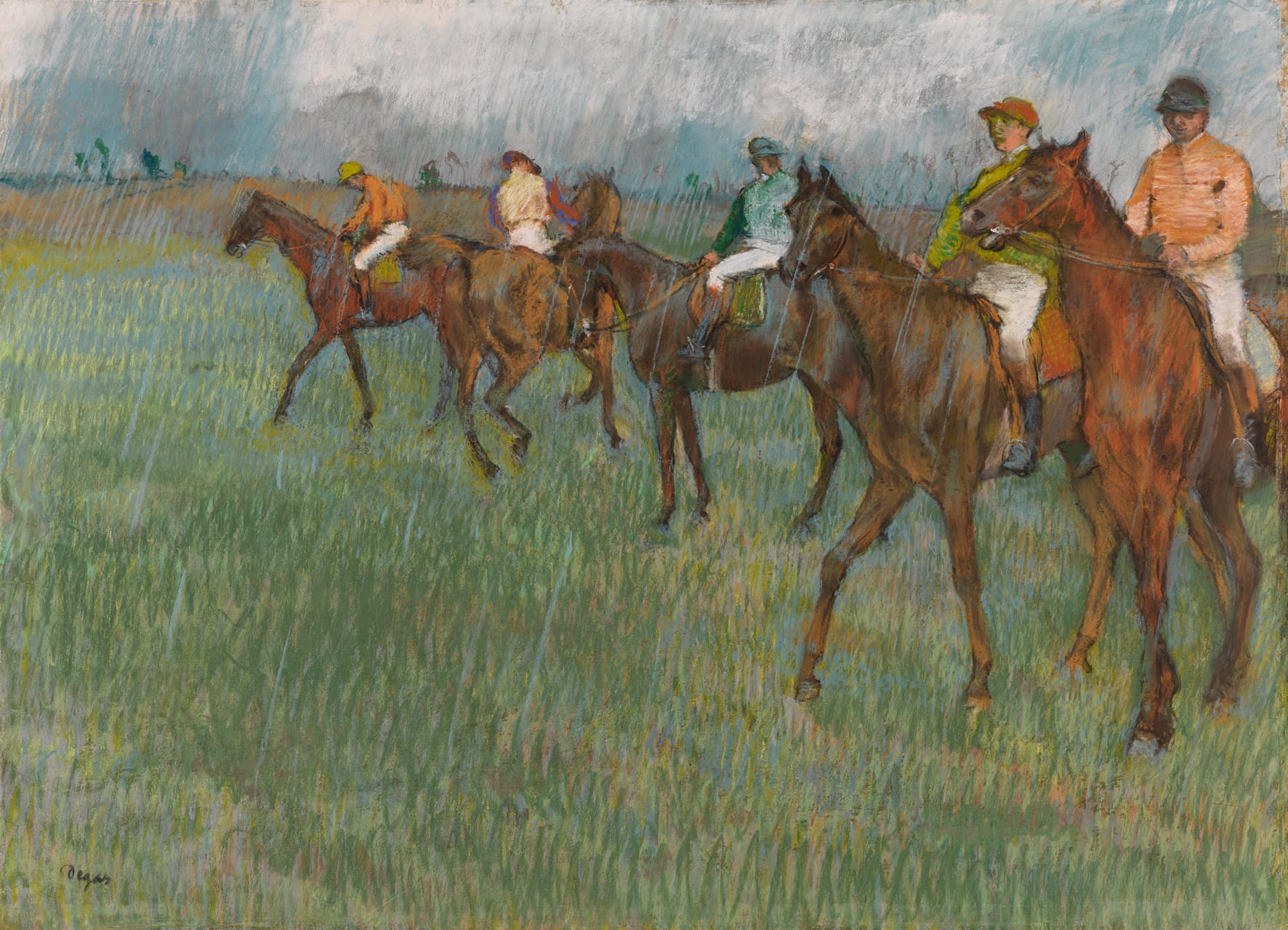
Elsewhere, the hang highlights Degas’ development with pastels, as he gains further mastery over his craft. ‘Preparation for the Class’, a work from 1877 featuring ballet dancers in a variety of poses against a sliver of the Paris skyline, sees Degas blending the various shades into one another, until the dancers melt into the background; next to is is a 1898 work, ‘Dancers on a Bench’, in which, having perfected a fixation technique, the layers of pastel are much clearer, and the scene is conjured up with vibrancy and economy; finally we have ‘Ballet Dancers’, one of his latest works, in which the unprimed canvas makes the pastel appear like oil paint. It’s difficult to believe that all works were painted by a single painter, using a single medium, but this is part of Degas’ magic.
The paintings on show invite close attention, as the viewer begins to make out the subtle layering of colour in the works: reds clash with lurid blues, while elsewhere mossy green shadow spread like bruises across cream skin; backdrops become works in their own right, with vibrant, unnatural colours, reminiscent of effluent sweeping across a landscape, or Gerhard Richter’s squeegee works.
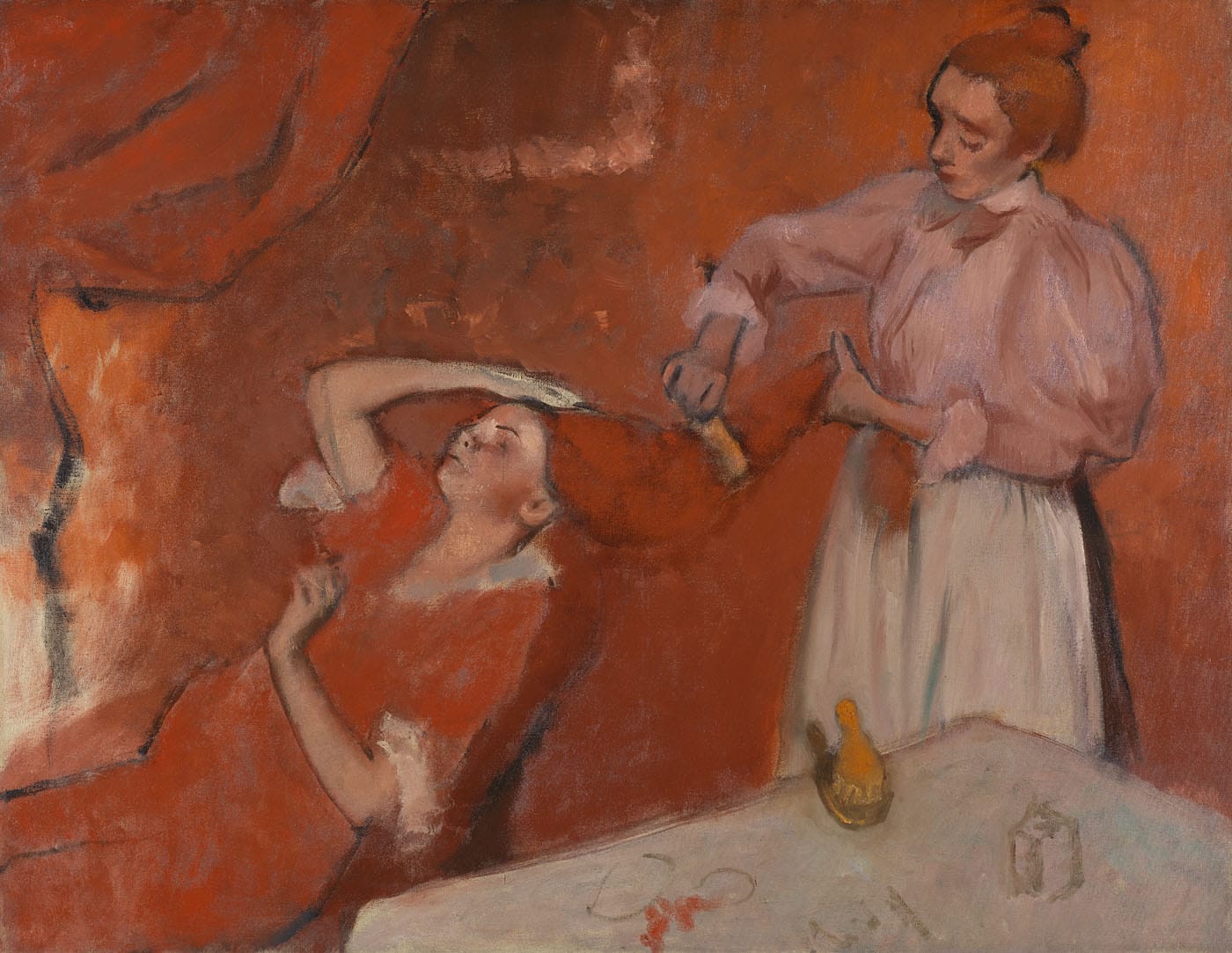
The exhibition ends with two contrasting paintings, which are essentially monochromatic: on the left is his pastel drawing ‘Woman at Her Toilette’, from 1897; incredibly pared down in its technique, Degas has drawn his regular obsession of a woman bathing, but left the canvas behind blank, so that great swathes of the image are taken up with negative space, contrasted by the soft but strong colours radiating off the woman’s back, and her single strand of hair, stylised in a way reminiscent of Edvard Munch. To the right, the National Gallery have placed Degas’ famed oil painting ‘Combing the Hair’, a visual assault in shades of red, which throb violently from the canvas surface. Between the two is a door to leave the gallery, but this is an exhibition that invites another circuit. And another. And perhaps even another.
Drawn in Colour: Degas from the Burrell is on at the National Gallery until 7th May 2018. Free entrance.


